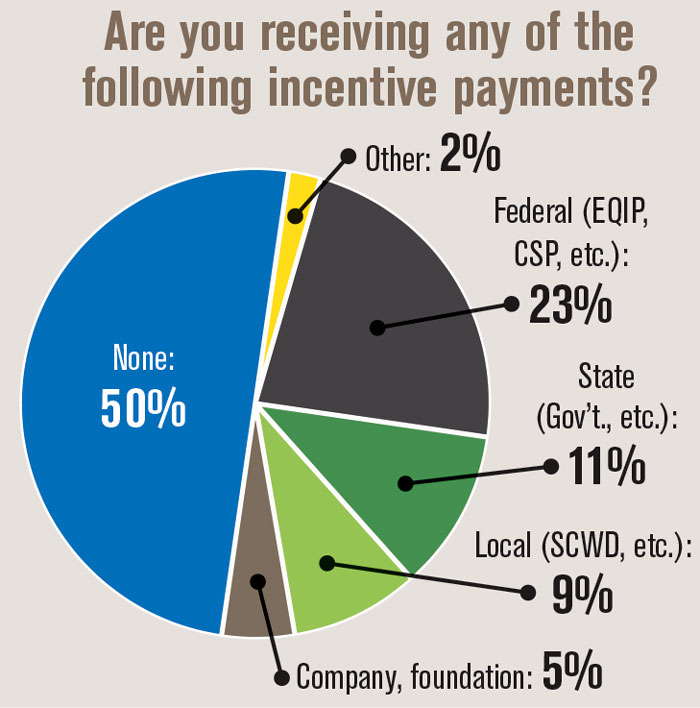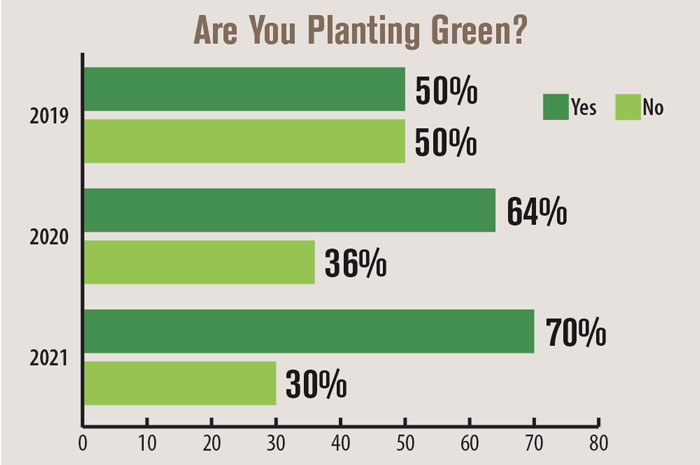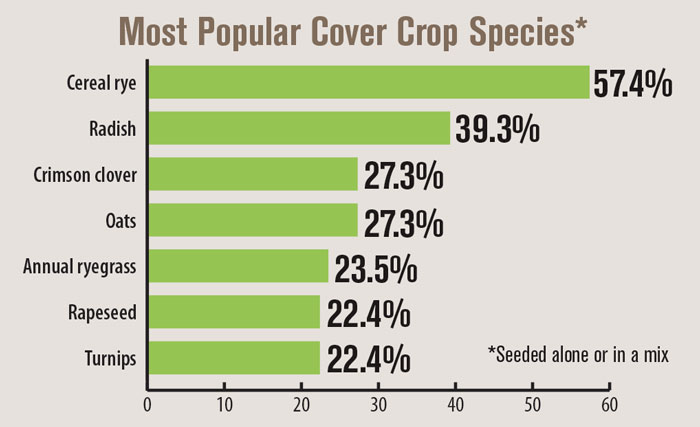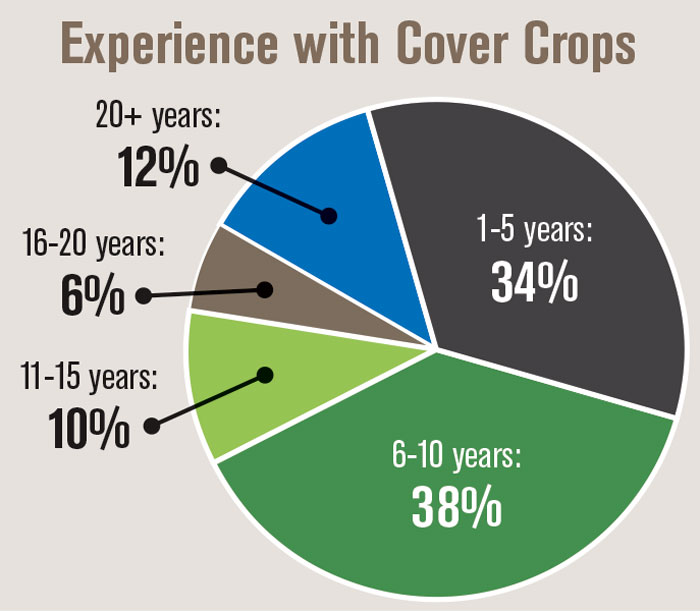Farmers from 30 different states participated in the 3rd annual Cover Crop Benchmark Study. The comprehensive survey featured 48 questions about several topics including management practices, motivations, challenges and expenses in 2021 and plans for 2022. Here are 5 key takeaways.
Top 5 Takeaways
- 50% received incentive payments to seed cover crops./li>
- Erosion prevention is number 1 benefit of using covers.
- 70% of total respondents are planting green.
- Cereal rye & radish reign supreme for third straight year.
- Cover Cropping experience is trending upward.
Growers Cashing in on Incentives
The data reveals that 50% of total respondents received some form of incentive payments to seed cover crops. That’s down 1 percentage point from 2020 and 9 points from 2019. 23.1% received payments from federal programs like the Environmental Quality Standards Program (EQIP) and the Conservation Stewardship Program (CSP). 11% received state payments, while 9% took advantage of local payments from Soil and Water Conservation Districts, among other sources.
Maximum Benefit is Erosion Prevention
Participants were asked to rank the level of benefits seen from cover crops in their operation. Options included no benefit, some benefit and maximum benefit. 20.5% ranked erosion prevention as a maximum benefit. Improved rainfall infiltration was 2nd with 11.9%, and better soil biological activity 3rd with 10.9%. These results go hand in hand with erosion prevention being selected as the most important reason (18%) for seeding covers.
More Farmers are Planting Green
70% of total respondents said they planted green. That’s up 6 points from 2020 and a whopping 20 points from 2019. Of those who planted green, the majority did so with soybeans (49%) and corn (35%).
Three-Peat for Cereal Rye
For the third year in a row, cereal rye was the No. 1 species of choice, with 57.4% seeding it either alone, or in a mix. Radish (39.3%) was 2nd for the third straight year. Crimson clover and oats were tied for 3rd at 27.3%. Other popular species included annual ryegrass (23.5%), rapeseed (22.4%), turnips (22.4%) and vetch (21.9%).
Cover Cropping Experience on the Rise
Data shows most growers started seeding cover crops less than 10 years ago, but experience is trending upwards. 38% said they’ve now planted covers for 6-10 years, a nearly 9-point increase from 2019 (29.4%). 34% have planted covers for 1-5 years. 12% have stuck with the practice for 20+ years, up 1.4 percentage points from 2020 and 3.2 points from 2019.
An in-depth review of the Cover Crop Benchmark Study will be published in the upcoming August edition of No-Till Farmer.









Post a comment
Report Abusive Comment